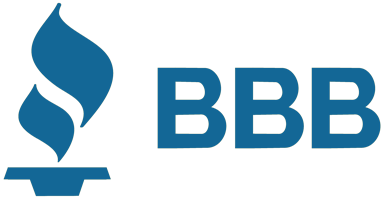How Wildlife Can Damage Your Home
Wildlife Damage To Your Insulation And Structure
Our homes are designed to be sanctuaries, places where we feel safe and protected from the outside world. Yet, for many homeowners, the presence of uninvited wildlife can quickly turn that sense of security into a source of stress. Animals like squirrels, raccoons, rodents, and bats often seek refuge in homes, particularly in attics, walls, and crawl spaces. While their presence might seem minor at first, the reality is that wildlife can cause extensive damage to both insulation and structural components, leading to costly repairs and ongoing issues if left unaddressed. Understanding the risks posed by wildlife is critical to protecting your home and ensuring its long-term safety.
Insulation: A Target For Nesting And Burrowing
Insulation serves as one of the most important components of a home, regulating temperature, reducing energy costs, and keeping indoor spaces comfortable year-round. Unfortunately, it’s also one of the first things wildlife targets when they invade a home. Animals are instinctively drawn to the soft, warm materials used in insulation, making it an ideal nesting site for their young. Squirrels, in particular, are notorious for burrowing into insulation, shredding it into pieces to create cozy nests. This leaves gaps in coverage, significantly reducing the insulation’s effectiveness and causing energy bills to rise.
Rodents like mice and rats also contribute to insulation damage, gnawing through materials and leaving behind droppings and urine that contaminate the space. This contamination not only reduces the insulation's efficiency but also creates health hazards for the home’s occupants. Once insulation is soiled or compacted, it often needs to be replaced entirely, resulting in a time-consuming and expensive process.
Structural Damage: When Wildlife Weakens Your Home
Beyond damaging insulation, wildlife can wreak havoc on the structural integrity of a home, causing problems that can escalate rapidly if not addressed. Many animals, such as raccoons and squirrels, are equipped with powerful claws and sharp teeth, allowing them to create entry points by tearing through shingles, soffits, vents, and even siding. These intrusions often start as small openings, but once wildlife gains access, the damage multiplies. Attics, walls, and crawl spaces become their preferred nesting sites, and in the process, these animals chew through essential components of the home, including wooden beams, drywall, and even electrical wiring. Each act of gnawing or clawing compromises the safety and stability of the structure, leaving homeowners with significant repair needs.
Raccoons, in particular, pose a serious threat due to their size, strength, and intelligence. A determined raccoon can rip apart roofing materials or claw through attic barriers in just a few hours, leaving gaping holes that invite further weather damage and other pests. Similarly, rodents like mice and rats have a constant need to gnaw to prevent their teeth from overgrowing. This leads them to target wooden supports, insulation, and even plastic pipes, further degrading the home’s structural integrity. If left unchecked, these vulnerabilities can result in costly repairs, reduced property value, and ongoing risks to the home’s safety.
The Hidden Cost Of Wildlife Waste
While physical damage to insulation and structural components is concerning, the waste left behind by wildlife introduces an entirely different level of risk. Animal droppings, urine, and nesting materials often accumulate rapidly in confined spaces like attics, crawl spaces, and walls. These organic materials create an environment ripe for bacterial growth, mold development, and persistent foul odors that can seep into living areas. Bat guano, in particular, poses a serious health hazard. This unsightly waste can harbor fungal spores responsible for histoplasmosis, a respiratory condition that can cause severe illness, especially in individuals with weakened immune systems.
Rodents and raccoons also leave behind waste that can attract secondary pests such as flies, mites, and beetles, further complicating the situation. Beyond health risks, this buildup of organic material can block ventilation systems, leading to reduced airflow and higher energy costs. Nesting debris near electrical wiring or heating elements adds yet another danger: an increased risk of fire. The cleanup process for wildlife waste is not only labor-intensive but also requires specialized equipment and expertise to ensure the area is thoroughly sanitized and restored. Failing to address these issues properly can leave homeowners with lingering hazards, making professional intervention essential for both health and safety.
How Wildlife Damage Adds Up
One of the most concerning aspects of wildlife damage is how quickly the costs can escalate. A small hole created by a squirrel or raccoon might initially seem like a minor issue, but once an animal gains entry, the scope of the damage can expand rapidly. Insulation is torn apart, wooden beams are chewed, and wiring is compromised, leading to problems that require specialized repairs. In some cases, water leaks can result from damaged roofing, further increasing repair costs and causing additional complications like mold growth.
The longer wildlife remains in a home, the more extensive the damage becomes. Animals are territorial and persistent, often returning to the same nesting site if access points aren’t properly sealed. This means that homeowners may find themselves dealing with repeat infestations and ongoing damage unless comprehensive wildlife control and prevention measures are implemented. Addressing wildlife issues promptly not only minimizes repair costs but also ensures that the home remains safe and structurally sound.
Prevention And Protection
The key to mitigating wildlife damage is prevention. Sealing entry points, reinforcing vulnerable areas, and maintaining the exterior of the home are essential steps in keeping animals out. Screening vents, trimming back tree branches near the roof, and repairing damaged roofing or siding can go a long way in preventing wildlife from gaining access. However, even with the best precautions, wildlife can still find a way inside.
When this happens, professional wildlife control becomes essential. Experts can not only remove the animals safely but also assess the extent of the damage and recommend solutions to prevent future issues. Their knowledge of animal behavior and home vulnerabilities ensures that the problem is addressed thoroughly, protecting both the home and its occupants.
Wildlife may enter homes in search of shelter, but the damage they leave behind is far from harmless. From shredded insulation to compromised structures and hazardous waste, the costs of wildlife intrusion can quickly add up. At Varment Wildlife Control, we specialize in providing effective, humane solutions to address wildlife issues and protect your home.
Our team of experts understands the challenges posed by wildlife and is equipped to handle every aspect of the problem, from safe removal to thorough cleanup and prevention. Don’t let wildlife compromise the safety or comfort of your home. Contact Varment Wildlife Control today, and let us help you reclaim your space, restore your peace of mind, and ensure the long-term integrity of your home. Together, we’ll safeguard your property from the costly damage wildlife can cause.
All Rights Reserved | Varment Wildlife Control

